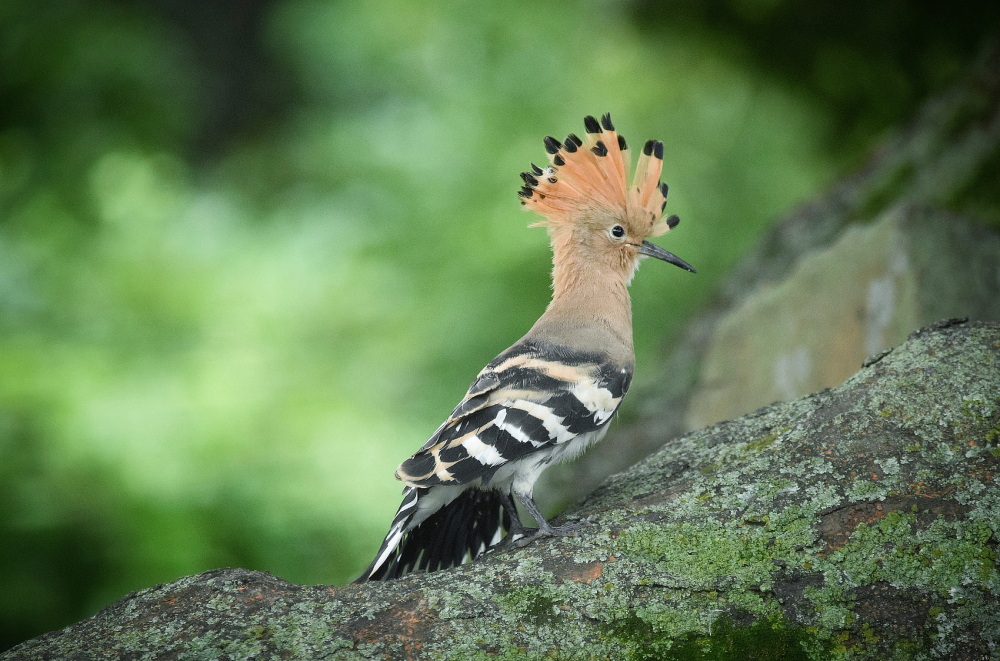
Audio/Xinhua
As the spring rain soaks into the fields, crops are lush and burgeoning, ready for their peak period. Grain Rain, or "Guyu" in Chinese pinyin, the 6th of the 24 solar terms in China, begins this year on April 20 and ends on May 4, 2021. At this time, if you see petals fall to the earth, then spring is drawing to an end.
Three phases of Grain Rain
In the first phase of Guyu, duckweeds start to grow rapidly, decorating ponds and lakes with emerald surfaces, as aquatic plants become dense in water in a few days with the infiltration of raindrops.
The second phase of Guyu hears the chirping of cuckoos. Cuckoo, sharing similar denotations with "sowing the grain" in Chinese pinyin, indicates the incoming sowing time as the temperature gets higher. The bird symbolizes the warm season and the mounting temperature, which are rather conducive for agricultural activities.
Hoopoe birds fly over the branches of mulberry trees in the third phase. Topped with a fan-shaped brown or pink "crown" with colored spots, the bird is symbolic of peace and happiness. As mulberry trees are planted for silkworm production in ancient China, the coming of hoopoes well reminds farmers of the time to rear silkworms.

Hoopoe birds fly over the branches of mulberry trees in the third phase.
Traditional customs
People mostly worship Cang Jie during Guyu, who is believed to have invented the Chinese characters during this period. From ancient times to the present, people have kept holding rituals in memory of the figure in Chinese folktales, which has become one of the vibrant and traditional events during the days of Guyu.
Agricultural activities
"Spring rain brings life to grains." (雨生百谷) The old saying suggests the agro-climatic significance of Guyu. During this period, precipitation reaches 30-50 mm in most areas in southern China in late April, providing crops with abundant water amid rebounding temperatures. "It's good to plant the cotton before the Grain Rain." (谷雨前,好种棉。) Since ancient times, cotton farmers have taken Guyu as an indicator of cotton sowing, which was coded into proverbs and passed down through generations. To repel evil spirits and welcome good fortune, farmers go into the fields to exterminate pests while posting "rain sticker," a kind of traditional new year painting with the wish for a good harvest on their soil. Customs like this are still popular in some northern provinces in China.

Food and drinks
The buds of Chinese toon, a nutrition-rich plant, are a must-eat during the Grain Rain. They are rich in vitamins and their organic ingredients help improve the immune system. People also attach importance to tea production with the coming of Guyu. Guyu tea, also known as the "second spring tea," enjoys a brilliant reputation among tea lovers. Tea picked amid the fine weather during this time brings an inviting smell and a fresh taste. It is lovely to see the tea leaves unfurl to get the strong scent out of the cup, which marks the ideal moment to enjoy the tea. People also pray for health by drinking tea.

Guyu tea enjoys a brilliant reputation among tea lovers.
Today people rarely take the last solar term of spring as a traditional holiday, yet for farmers who provide grains and vegetables for the vast country and its people, Guyu means the beginning of the real "spring." The solar term witnesses crops grow amid the rains, heralding a good harvest for the second half of the year. And the abundant rainwater during this period always nourishes the earth and the people.

Check the English version of the video provided by Weather China, online weather service of the China Meteorological Administration, to find out more!
Video/CGTN
Sources: Xinhua, CGTN
Photos: Xinhua
Editor: Lv Yun